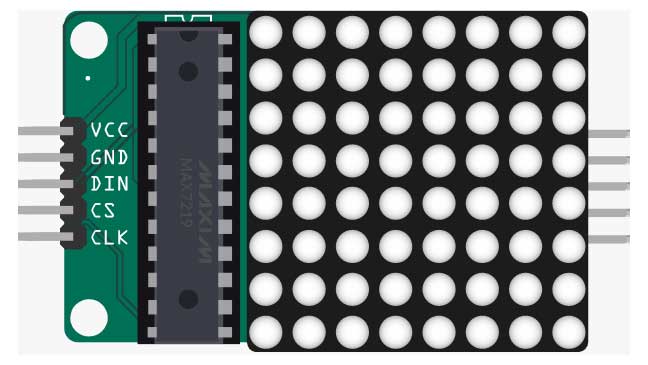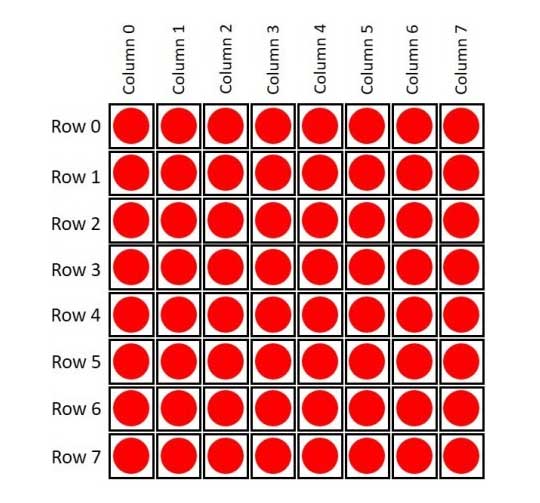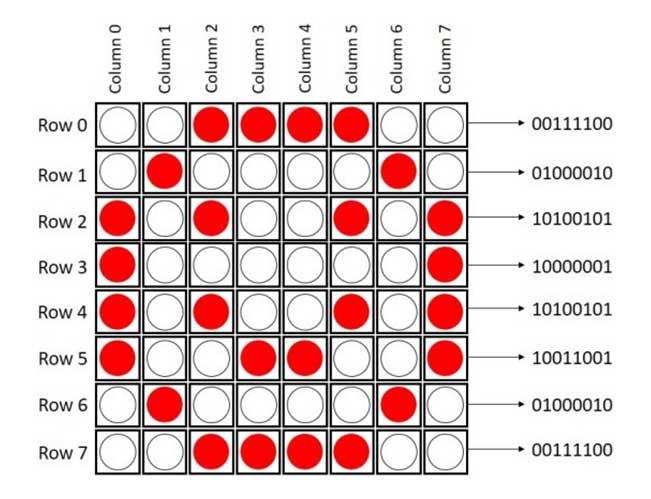Any single color large LED matrix display which
Using a 7219
Our eyes remember a flash
The
Pinout of 8×8 Matrix Display
You only need to connect 5 pins from the dot matrix to your Arduino board. The wiring is pretty straightforward:
| Dot-matrix pin | Wiring to Arduino Uno |
| GND | GND |
| VCC | 5V |
| DIN | Digital pin |
| CS | Digital pin |
| CLK | Digital pin |
SPECIFICATIONS:
01. Parameter MAX7219
02. Power Supply = 4.0V ~ 5.5V
03. Supply Current = 330mA
04. Segment drive source current = 40mA
05. Scan rate = 500-1300Hz (800Hz Typ.)
06. CLK max = 10MHz
07. Voltage +5V.
08. Vih (input high) min 3.5V


